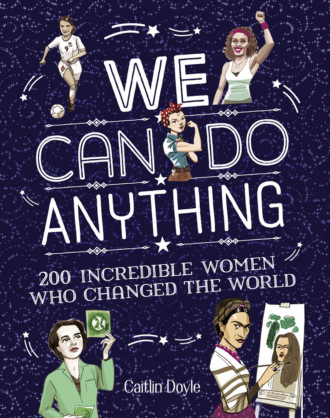
Полная версия
We Can Do Anything: From sports to innovation, art to politics, meet over 200 women who got there first

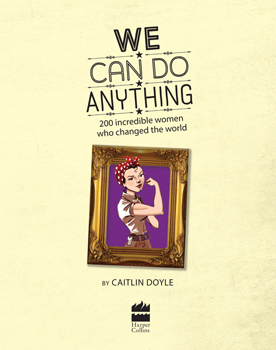
COPYRIGHT
HarperCollinsPublishers
1 London Bridge Street
London SE1 9GF
www.harpercollins.co.uk
First published in hardback by HarperCollinsPublishers in 2016 as Girls Can Do Anything
This revised paperback edition first printed in 2018
Copyright © HarperCollinsPublishers
Cover design © HarperCollinsPublishers
Caitlin Doyle asserts her moral rights as author of the text.
Cover and interior illustrations by Chuck Gonzales
Cover and interior design by Pete Clayman
A catalogue record of this book is available from the British Library
While every effort has been made to trace the owners of copyright material reproduced herein and secure permissions, the publishers would like to apologise for any omissions and will be pleased to incorporate missing acknowledgements in any future edition of this book.
All rights reserved under International and Pan-American Copyright Conventions. By payment of the required fees, you have been granted the nonexclusive, non-transferable right to access and read the text of this e-book on screen. No part of this text may be reproduced, transmitted, downloaded, decompiled, reverse engineered, or stored in or introduced into any information storage retrieval system, in any form or by any means, whether electronic or mechanical, now known or hereinafter invented, without the express written permission of HarperCollins e-books.
Find out about HarperCollins and the environment at www.harpercollins.co.uk/green
Source ISBN 9780008285616
Ebook Edition © February 2018 ISBN: 9780008213459
Version: 2018-02-22
DEDICATION
Dedicated to Bump (AKA Saoirse)
This title comes from a sign my encouraging
parents hung in my room when I was small.
This book is dedicated to the women and
men in my life who taught me from a young
age that, truly, girls can do anything.—C.D.
CONTENTS
COVER
TITLE PAGE
COPYRIGHT
DEDICATION
INTRODUCTION
ARTS & LITERATURE
POLITICS & WORLD-BUILDING
SCIENCE & INNOVATION
SPORTS & ENDURANCE
EPILOGUE
SEA CHANGE: WAVES OF FEMINISM
CONCLUSION
BIBLIOGRAPHY
GLOSSARY
INDEX
IMAGE CREDITS
ABOUT THE AUTHOR & ILLUSTRATOR
ACKNOWLEDGEMENTS
ABOUT THE PUBLISHER
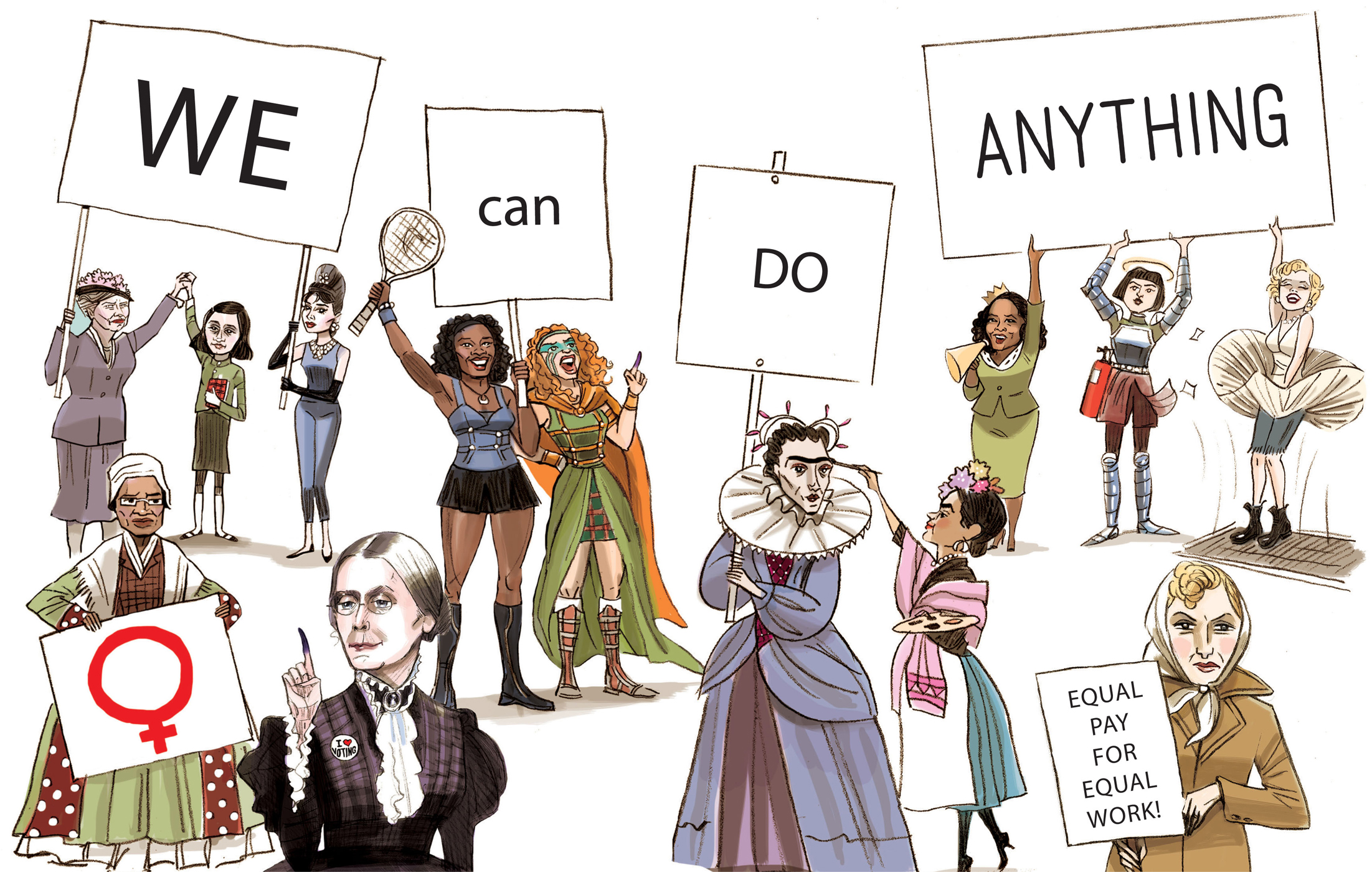
Introduction
Hello ladies and gentlemen, boys and girls, and welcome to the adventure that is We Can Do Anything!
Within these colorful and informative pages, there is something for everyone—a little bit of round-the-world record-breaking here, some major history changers there … But mostly, this book is a wonderful opportunity for each of us to hear about the making of the world around us, and to listen to the female voices—so often silenced by history books and social norms—that spoke so much of the world’s wisdom.
I sometimes think about a fridge magnet I once saw, which said, “For most of history, Anonymous was a woman.” I wanted to give this inanimate magnet the power of speech, because its message was the same as the one that I hoped to deliver through this book: for much of history, a majority of the silent voices were those of girls and women. I know that some of you are thinking, “but it’s the 21st century, and everyone from Beyoncé to Taylor Swift, Joseph Gordon Levitt to Chimamanda Ngozie Adichie, is leaning in, standing up, and shouting loud in support of women.” That’s true, so you might also say that feminism’s no longer a dirty word and women have made it—and that this book is simply an attractive, educational, historical, and “politically correct” artefact about a time and place where women found themselves to be the supporting acts on an otherwise masculine stage … Right? Wrong.
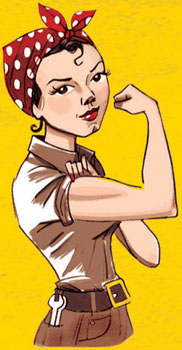
If history has taught us anything, it is that those great thinkers and doers of the past must stand as inspiring examples for us to learn from—and do better. For every woman who has chipped away at the glass ceiling of business, or outperformed every other runner on the track, there are still millions of others who never even make it to the starting line. My wish is for you, dear readers, the creators of the future, to ensure that we all learn from the greatness that came before, in order to make the future even greater—for all.
Within these pages, I have included more than 200 incredible women who I believe to have been at the top of their game within their chosen fields. However, there are simply not enough pages to include every great individual, and the selection I have made is limited by my own research and subjectivity. I invite you to include your own “greats” within the pages of this book. You will find blank pages at the end of each chapter, where you can add the names and details of the women who really mean something to you—be they big names from history, or current affairs, or people from your own life who have inspired and amazed you. Make this book your own.
Caitlin Doyle
June 2016

CONTENTS
SAPPHO
MURASAKI SHIKIBU
SAINT HILDEGARD OF BINGEN
THE MONA LISA
ARTEMISIA GENTILESCHI
APHRA BEHN
COUNTESS D’AULNOY
FAIRY TALES
JUANA INÉS DE LA CRUZ
JULIA MARGARET CAMERON
BEATRIX POTTER
VIRGINIA WOOLF
COCO CHANEL
MA RAINEY
GEORGIA O’KEEFFE
DOROTHEA LANGE
ANNI ALBERS
FEATURE: WOMEN IN PHOTOGRAPHY
MARGARET BOURKE-WHITE
JOSEPHINE BAKER
KATHARINE HEPBURN
FRIDA KAHLO
GINGER ROGERS
FEATURE: FUNNY WOMEN
LUCILLE BALL
SISTER ROSETTA THARPE
BILLIE HOLIDAY
ÉDITH PIAF
ELLA FITZGERALD
PHYLLIS DILLER
MARGOT FONTEYN
MARIA CALLAS
MARILYN MONROE
MAIJA ISOLA
YAYOI KUSAMA
AUDREY HEPBURN
DELIA DERBYSHIRE
FEATURE: WOMEN IN MUSIC
DOLLY PARTON
MERYL STREEP
ANNA WINTOUR
FEATURE: FEMALE FASHION-SETTERS
OPRAH WINFREY
MADONNA
EVELYN GLENNIE
J.K. ROWLING
FEATURE: WOMEN OF LETTERS
THE NIGHTINGALES
BEYONCÉ
MISTY COPELAND
SAPPHO ONE OF THE GREATEST POETS OF ANTIQUITY
FULL NAME: Sappho
BORN: C. 620 B.C., LESBOS, GREECE
DIED: 550 B.C., LESBOS, GREECE
NATIONALITY: ANCIENT GREEK
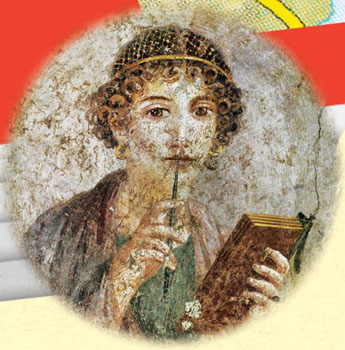
A poetess, believed to be Sappho, from an ancient Roman fresco
“Beauty endures only for as long as it can be seen; goodness, beautiful today, will remain so tomorrow.”
SAPPHO
THE POETESS
Sappho, or Psappha, is often simply referred to as “the Poetess”—so great was her talent. Her fame is considerable, especially as very little is known about the woman herself.
Sappho spent most of her life on the Greek island of Lesbos and is believed to have been born to an aristocratic family. She is said to have married and had a daughter, but any details of this are scarce. Sappho wrote many songs and poems and is considered to be one of the greatest of the ancient poets.
BEAUTY ENDURES
Little remains of Sappho’s work, but scholars continue to be fascinated by her. Newly discovered poems have been published as recently as 2014. Her poetry and songs were written in a unique style, now called “Sapphic” meter. The language was simple and direct, but full of melody.
Often Sappho wrote about beauty and love—sometimes addressing her poems to men but more often to women. In fact, her name (as an adjective, “Sapphic”) is used to describe romantic love between women, as is the island where she was born (“lesbian” comes from “Lesbos”). She wrote odes to the goddesses and retellings of Greek myths. She also wrote about her community and, it is believed, herself. This was different from the male poets of the time, who tended to focus on politics.
In spite of the fact that Sappho lived over 2,000 years ago, and that much of her work has been lost, her words are still read and studied today. Sappho remains known as one of the greatest ancient poets, and her memory lives on through her work.
MURASAKI SHIKIBU FIRST MODERN NOVELIST
FULL NAME: Murasaki Shikibu
BORN: C. 978, HEIAN-KYŌ, JAPAN
DIED: C. 1014, POSSIBLY BIWA, JAPAN
NATIONALITY: JAPANESE
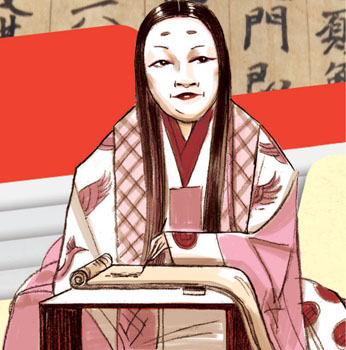
LADY MURASAKI
Murasaki Shikibu, also known as “Lady Murasaki,” was an 11th-century poet and novelist in Japan. She wrote during Japan’s “Heian” period, a golden age of peace, harmony, and the arts. Heian women did not typically learn written Chinese (the language of government in Japan), but Murasaki was anything but typical. She excelled and quickly became a prolific writer of poems and novels in Japanese and is believed to be the world’s first novelist. Her novel, The Tale of Genji, was written in 1007. Many consider it the greatest work of Japanese literature and the oldest full novel in the world. Among other works, she also wrote a volume of poetry entitled The Diary of Lady Murasaki.
Murasaki was married and had a daughter, but her husband died within two years of their marriage. It is believed that because of her incredible writing talent and intelligence, she was brought to live at the royal court. There, she became a lady-in-waiting to Empress Akiko. Murasaki kept a diary about her views on life at court. She used these observations for her novel about daily life among upper class society. The Tale of Genji was immediately successful. It has since been translated into several languages and illustrated editions. To this day, it continues to be studied as the main source of knowledge about life in ancient Japanese society.
FABULOUS FIRSTS
SAINT HILDEGARD OF BINGEN IMPORTANT MEDIEVAL COMPOSER AND “INVENTOR” OF OPERA
FULL NAME: Hildegard von Bingen (A.K.A. Sibyl of the Rhine)
BORN: C. 1098, BEMERSHEIM, WEST FRANCONIA (NOW GERMANY)
DIED: 1179, RUPERTSBERG, WEST FRANCONIA (NOW GERMANY)
NATIONALITY: GERMAN

Illustration of Saint Hildegard (date unknown)
INSTRUCTIONS FROM GOD
Hildegard von Bingen achieved many things through devotion to her faith. She became a nun, but she was also a composer, author, preacher, visionary healer-doctor—later a saint. She is also credited as being the inventor of opera. From a young age, Hildegard felt a connection to God. She experienced visions and heard voices. Her parents sent her, aged eight, to live in a convent. As a student of the mother superior, Jutta, Hildegard read and studied widely. When Jutta died, 38-year-old Hildegard was unanimously elected by her fellow nuns to replace her. Her writings became well known, and many nuns came to learn from her. Hildegard knew about medicine and was a great healer. Crowds gathered to have her “miracles” worked on them. She preached widely, even though this was illegal for women. She often challenged senior Church officials and fought for independence. Some of her views on the Church, and on women in society, were progressive. She corresponded with several important figures of the time, many of whom sought her advice, including the German emperor and the English monarchs.
THE CULT OF HILDEGARD
Hildegard was one of the most prolific writers of her time. She documented her religious visions, as well as writing poetry, plays, and books on medicine and women’s health. As well as for her role as a visionary, she is best known today as a composer of popular songs, which are still being performed. Around 70 of her compositions have survived—a huge number for a medieval composer.
After she died, the process of making her a saint was started—but it wasn’t until 2012 that she was declared a saint. She was also named a “Doctor of the Church”—a title held by very few saints—to emphasize the importance of her teachings. A “Cult of Hildegard” exists today, followed by those who live by those teachings. Hildegard was a determined leader. She is still celebrated as a feminist who both promoted and celebrated the virtues of female community and intellect.
THE MONA LISA THE WORLD’S MOST FAMOUS PAINTING
FULL NAME: La Gioconda (or, more commonly, The Mona Lisa)
CREATED: C. 1503, FLORENCE, ITALY
NATIONALITY: ITALIAN/FRENCH
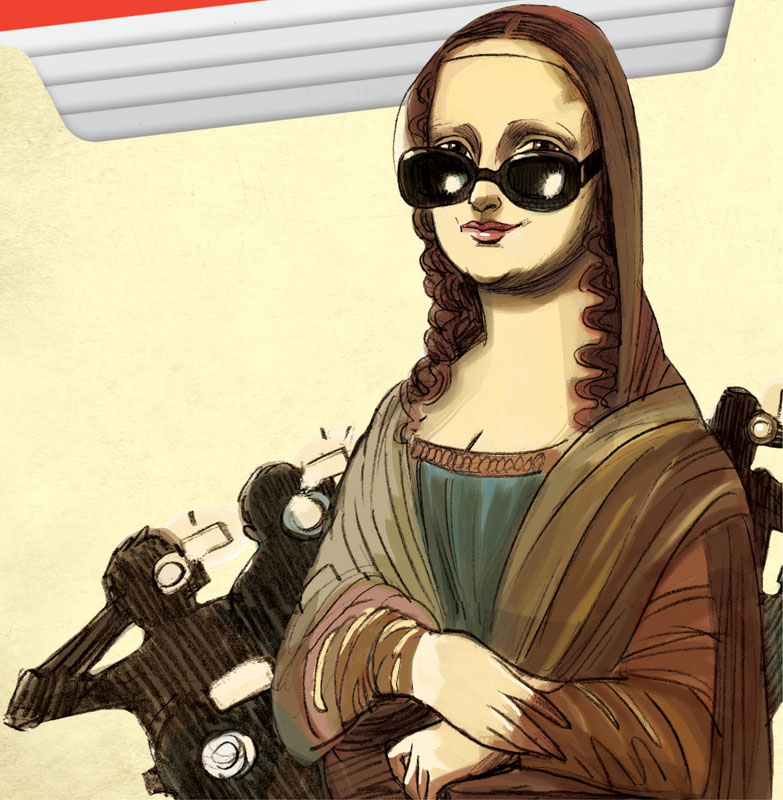
THE WORLD’S MOST FAMOUS SMILE
La Gioconda, the painting better known as The Mona Lisa, is one of the most visited and best-known paintings in the entire world. Its painter, Leonardo da Vinci, was not only an artist, but also an inventor, sculptor, architect, and engineer. He painted the work in Florence some time between 1503 and 1506, and the painting now hangs in the Musee de Louvre in Paris, France. Leonardo’s composition and style set the standard and revolutionized portrait painting.
WHO IS MONA LISA?
In spite of its claim to be the world’s most famous painting, a lot of mystery surrounds the half-smiling woman in the picture. Many historians believe her to be Lisa Gherardini del Giocondo, the wife of a silk merchant from Florence. Others believe the model could have been Leonardo’s mother, Caterina, or an Italian princess named Isabella d’Este. A more unusual suggestion is that the painting is actually meant to be a riddle: a self-portrait of Leonardo himself. The question remains unanswered to this day, over 500 years later.
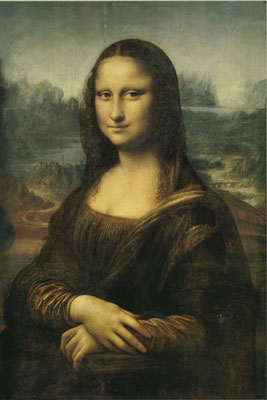
Just who is the woman in the painting? No one is certain. All we do know is that The Mona Lisa was painted in oil paints on wood around 1503.
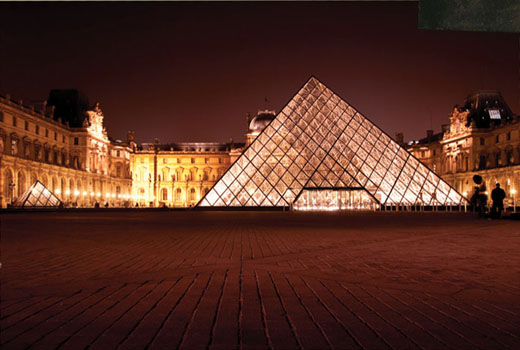
The Musee de Louvre, in Paris, France, is one of the most popular museums of art in the world.
The Mona Lisa remains one of the most replicated artworks, imitated by artists such as Marcel Duchamp and Andy Warhol. Operas and ballads have been written about her, as well as movies, novels, and plays. Her mysterious smile remains the most recognized in the world.
ARTEMISIA GENTILESCHI IMPORTANT PAINTER OF THE ITALIAN RENAISSANCE
FULL NAME: Artemisia Gentileschi
BORN: JULY 8, 1593, ROME, ITALY
DIED: C. 1652, NAPLES, ITALY
NATIONALITY: ITALIAN
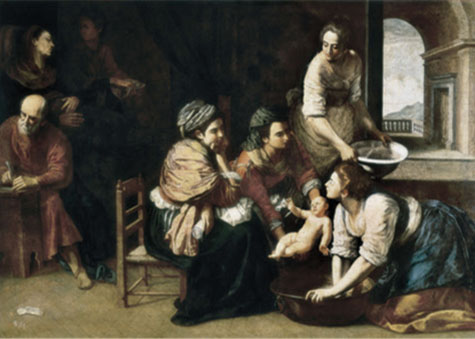
“Birth of St. John the Baptist,” 1635 oil-on-canvas painting by Artemisia Gentileschi
Artemisia Gentileschi was the daughter of Orazio Gentileschi, an accomplished Italian painter of the Baroque period. (Baroque design was grand and full of movement and a major artistic style in Renaissance Europe.) Orazio encouraged his daughter’s artistic skills, and they worked together on several paintings. Artemisia eventually moved to Florence, where she worked for wealthy art patrons, including the Medici family and the King of Spain.
STRONG WOMEN
Artemisia’s most famous works include “Madonna and Child,” “Susanna and the Elders,” “Judith Slaying Holofernes,” and “Cleopatra,” as well as several self-portraits. Her paintings often focus on active female characters who are equal to men. This was unusual at a time when women were usually painted as beautiful and passive. Very few women made it as Renaissance painters. However, Artemisia was successful during her lifetime, which is uncommon for any painter, but even more so for a woman in that period. She was also the first woman to become a member of the famous Academy of Fine Arts in Florence. She is now considered one of the best and most progressive painters of the time and a feminist icon.
FABULOUS FIRSTS
APHRA BEHN PIONEERING AUTHOR AND ONE OF THE FIRST PROFESSIONAL FEMALE WRITERS
FULL NAME: Aphra Behn
BORN: C. 1640, U.K.
DIED: APRIL 16, 1689, LONDON, U.K.
NATIONALITY: ENGLISH
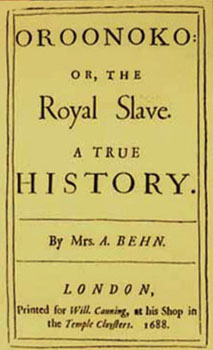
Original 1688 first edition cover of Aphra Benn’s novel, Oroonoko
UNLADYLIKE?
Aphra Behn was many things: novelist, playwright, poet, translator, and spy. She lived in the mid-1600s, at a time when women were very firmly under the control of their fathers and husbands. Nevertheless, Aphra became a celebrity. She was a paid author, financially independent, and this made her very unusual. She also fought for the equality of the sexes. For all of this, she was accused of being “unladylike”—but she did not let this stand in her way.
CELEBRITY, SPY, WRITER
Little is known of Aphra’s early years, other than that she spent some time in South America. In 1666, Aphra is known to have acted as an English spy in Antwerp, Holland on behalf of the royal family. She collected intelligence about military threats during the Second Dutch War. Not long after, she began writing plays, followed by novels and poetry, as a means of earning an income and paying off her debts. Being a professional (paid) writer was almost unheard of for a woman at the time. Her most successful play was called “The Rover” and was written in 1681. She wrote several plays and was considered one of the most prolific playwrights of her time. Her speciality was comedy, but through her plays she was able to question the contemporary treatment of women. Her 1688 novel, Oroonoko, is today recognized as iconic in the development of the novel in the English language. The novel told the story of an enslaved prince and the harsh treatment of the local people by the colonists.
Aphra was also unusual in that she never used a male pen name or pretended to be a man when she wrote or competed against male playwrights. She was radical in her belief that women should be educated. Aphra Behn’s work was overlooked for roughly 300 years, until the 20th century. Now, she is recognized as an important writer, novelist, and feminist icon.
COUNTESS D’AULNOY NOVELIST WHO COINED THE TERM “FAIRY TALE”
FULL NAME: Marie-Catherine Le Jumel de Barneville
BORN: (EXACT DATE UNKNOWN) 1650, NEAR HONFLEUR, FRANCE
DIED: JANUARY 14, 1705, PARIS, FRANCE
NATIONALITY: FRENCH
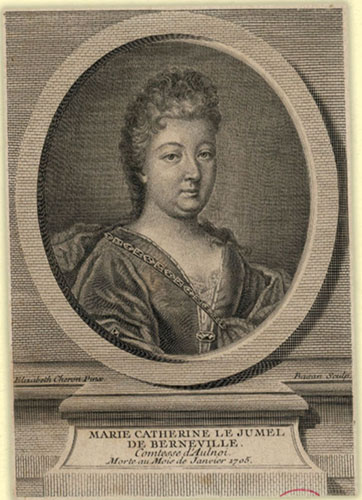
Countess d’Aulnoy, in an 18th-century engraving
FAIRY TALES FOR GROWN-UPS
Marie-Catherine Le Jumel de Barneville, also known as the Countess d’Aulnoy or Madame d’Aulnoy, was a 17th-century novelist and fairy-tale writer. Many of her works told of intrigue and scandal, just like her own personal life. As a young wife, Marie is rumored to have conspired with her mother to make up false accusations about her husband. When the plot backfired, Marie had to leave France for 15 years. During this time, she traveled in Spain, England, and Holland. Her adventures fed into her stories, and when she returned to France in 1685, she began her literary career. At the time, literary salons (where writers would share stories out loud) were fashionable. Marie hosted her own popular salon, and her work was soon published.
Marie’s novels were very popular across Europe. They told fictionalized accounts of history in the royal European courts. However, it was her fairy tales (contes de fées), first published in 1707, for which she is best known. Marie coined the term “fairy tales” for the popular folk tales featuring fantasy characters and magic. The Brothers Grimm would become famous for their own collections of such tales over 100 years later. While Marie’s tales are less well known today, she made a huge contribution to the genre that helped create the tales we love today.
FAIRY TALE CHARACTERS
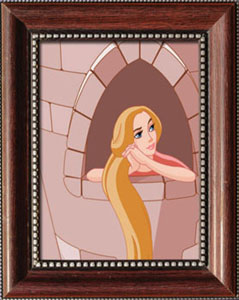
RAPUNZEL
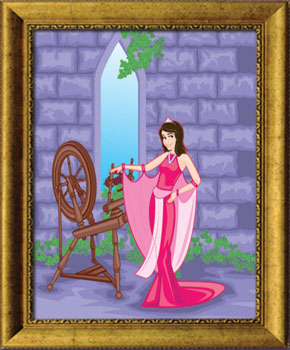
AURORA (FROM SLEEPING BEAUTY)
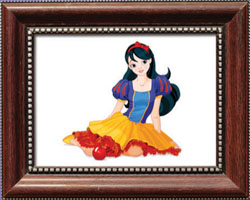
SNOW WHITE
Fairy tales are fantasy stories—often, but not always, for children—that feature magic and include creatures such as fairies, elves, and dragons. Countess d’Aulnoy coined the term contes de fées (fairy tales) in the 17th century, grouping together this style of story. Traditionally, these tales were told out loud and passed down from generation to generation. The Grimm Brothers, Charles Perrault, Countess d’Aulnoy, and Hans Christian Anderson all collected these stories, and they have become the tales we know and love today.





